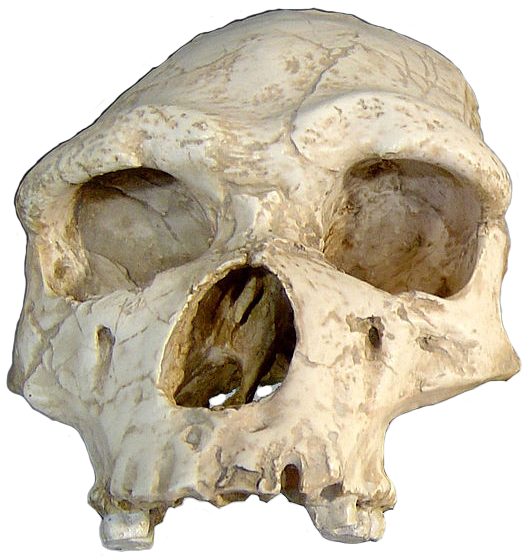
Arago 21 is a deformed cranial fragment dated to approximately 450,000 years. The skull was found by H. Lumley and M.A. Lumley in the Arago Cave located at Tautavel France. The hominid was twenty years old as indicated by the state of the fronto-pariental suture, and the gender is thought to be male. Archaeologists were uncertain of the age of the hominid, although finding the morphology comparable to the Petralona skull that is accepted as a Neanderthal of the Upper Pleistocene variate, paleoanthropologists (Cartmill, Smith, et al) have classified the skull instead as Heidelberg.
For more information, click here. Or, Try these sources:
- Smithsonian museum. Can be read here.
- Seidler, H.; Falk, D.; Stringer, C.; Wilfing, H.; Müller, G. B.; Zur Nedden, D.; Weber, G. W.; Reicheis, W.; Arsuaga, J. L. (1997). "A comparative study of stereolithographically modelled skulls of Petralona and Broken Hill: Implications for future studies of middle Pleistocene hominid evolution". Journal of Human Evolution. 33 (6): 691–703. doi:10.1006/jhev.1997.0163. PMID 9467776.Can be read here.
- Homme de Tautavel (Homo erectus) (in French) Hominidés.com. Can be read here.